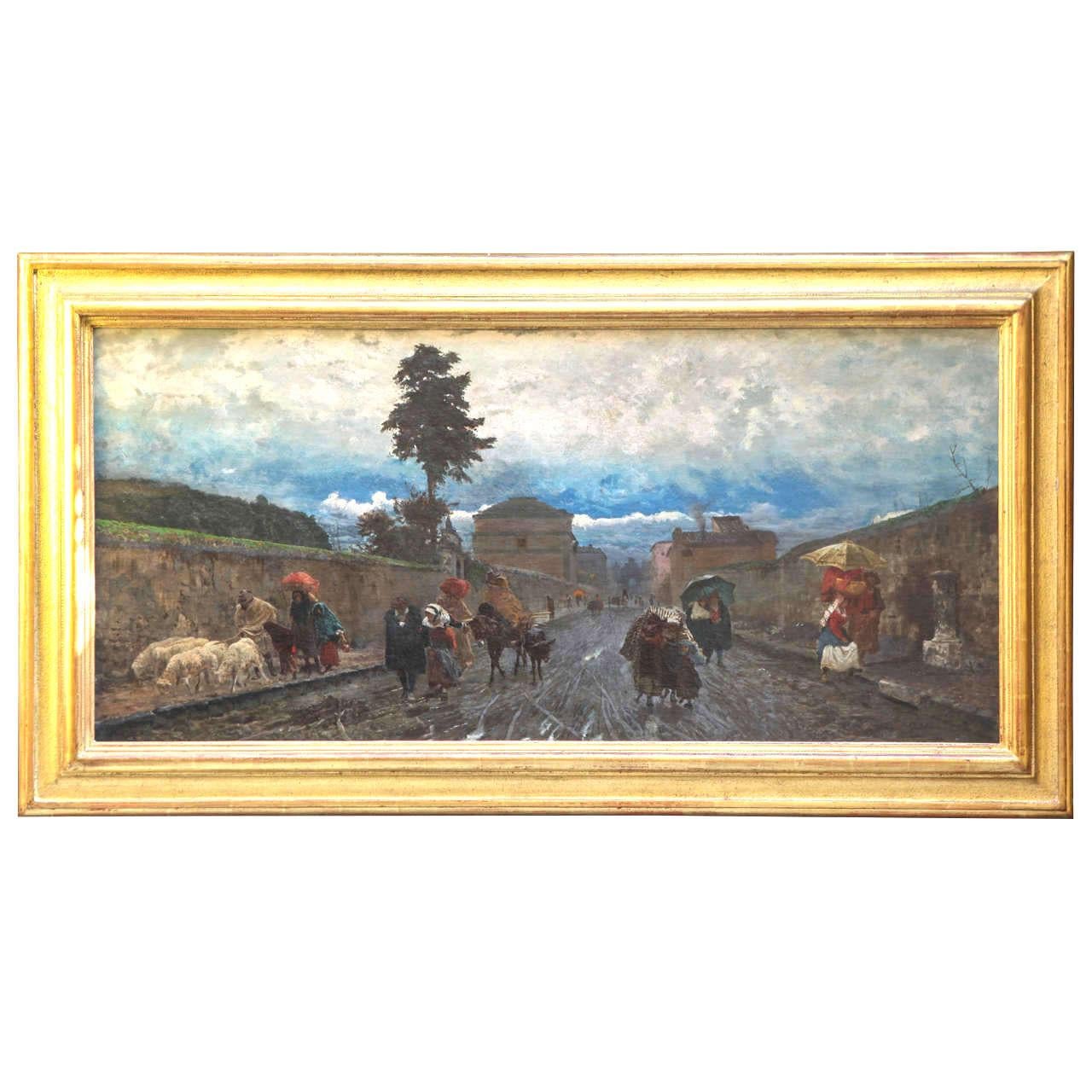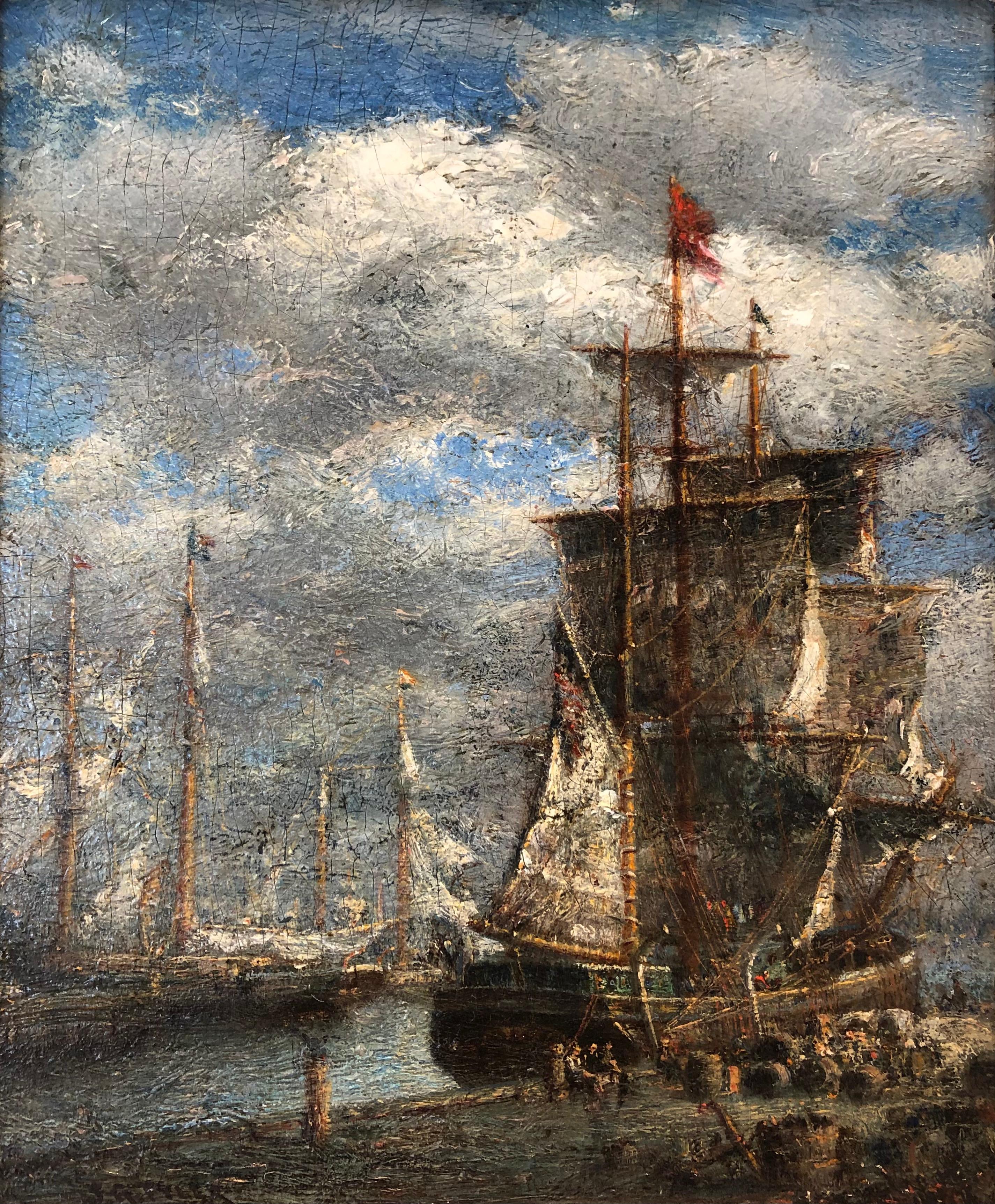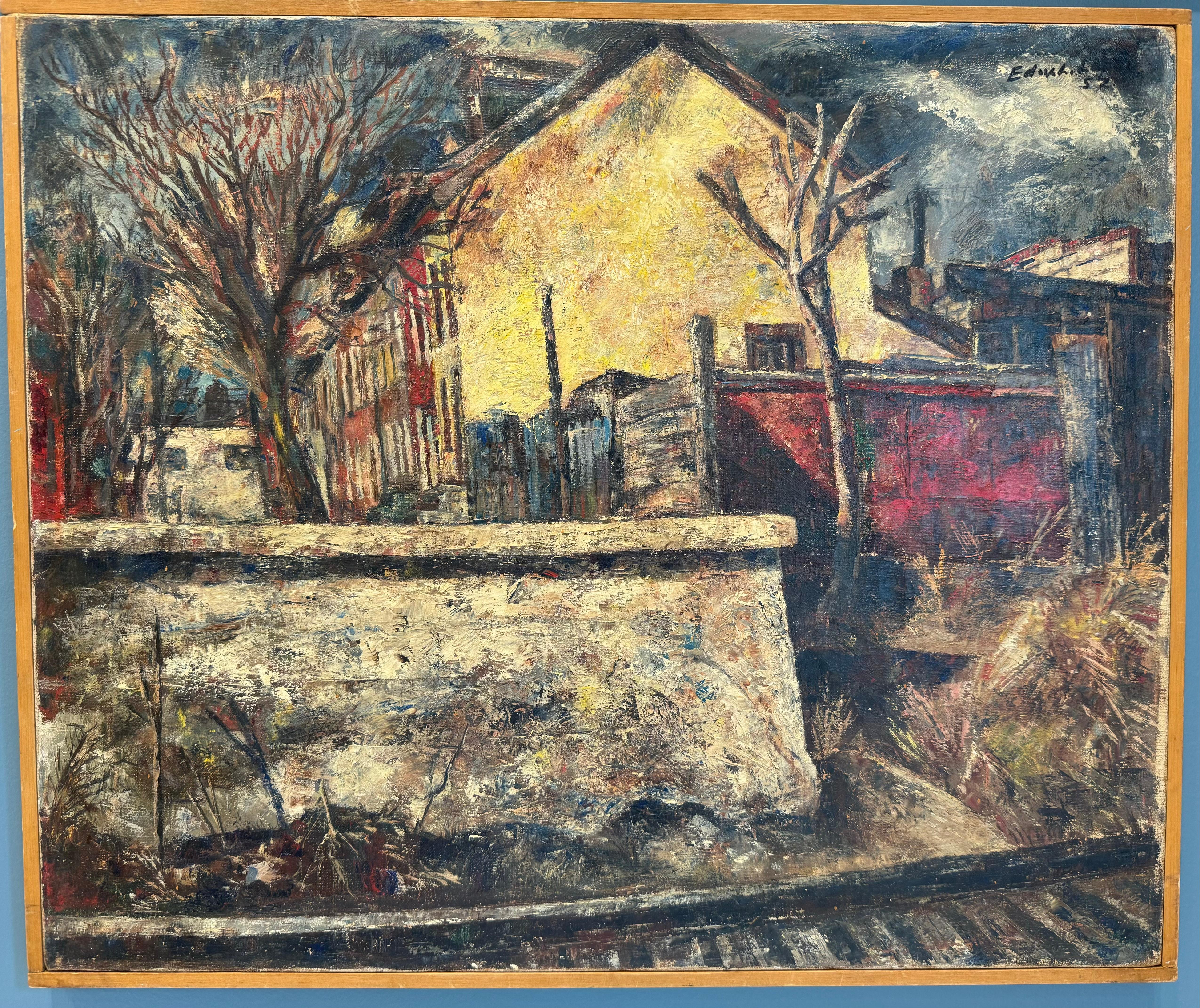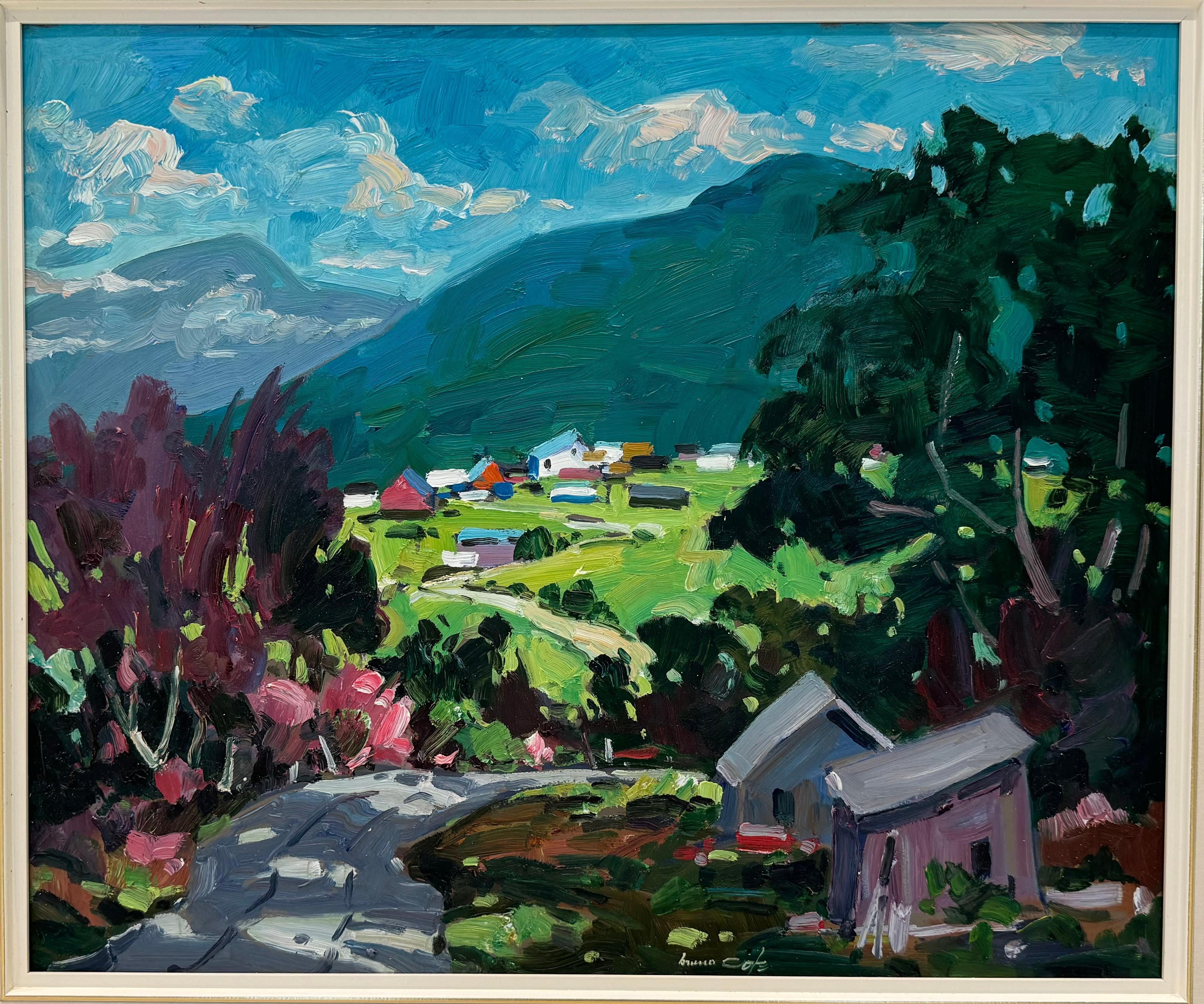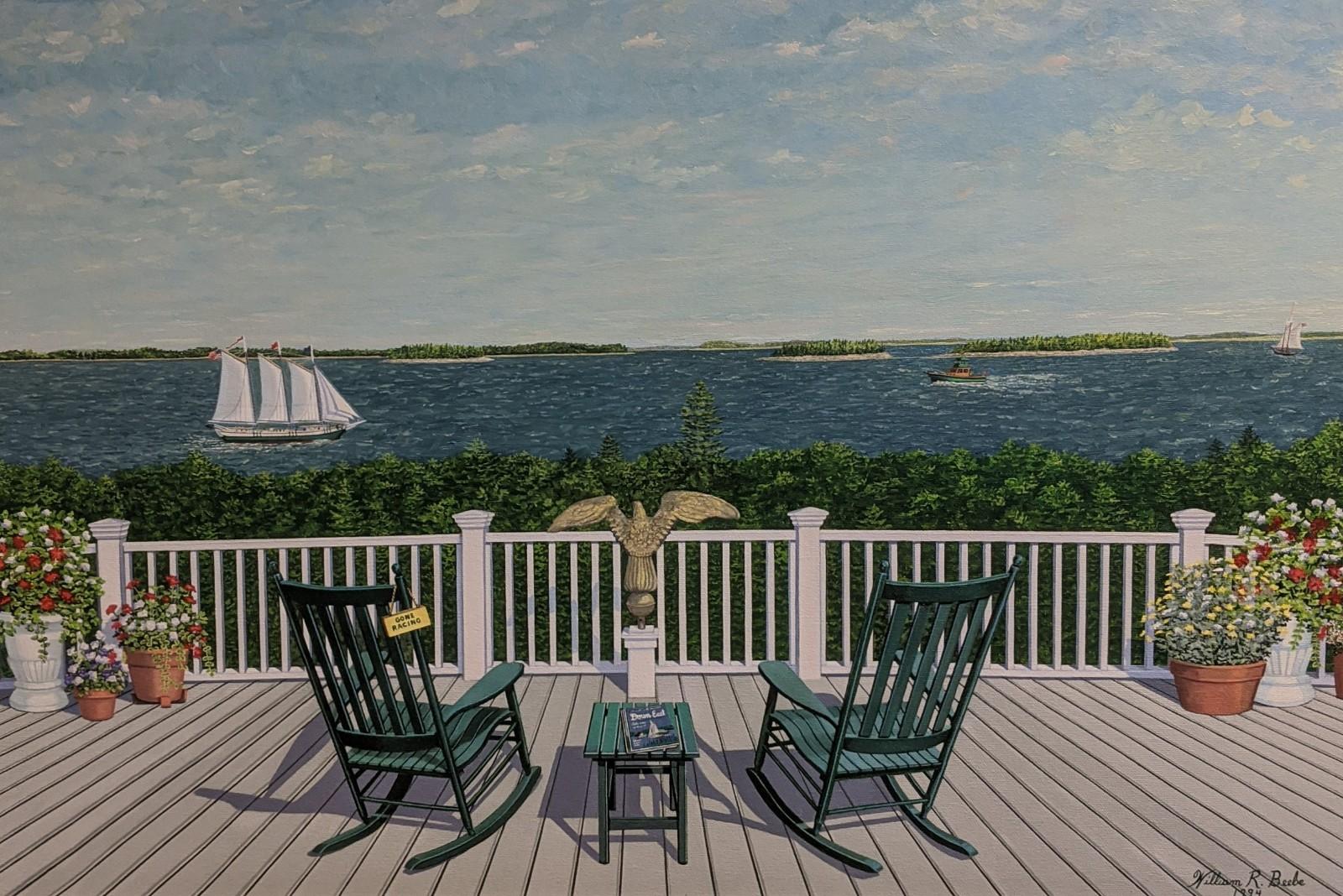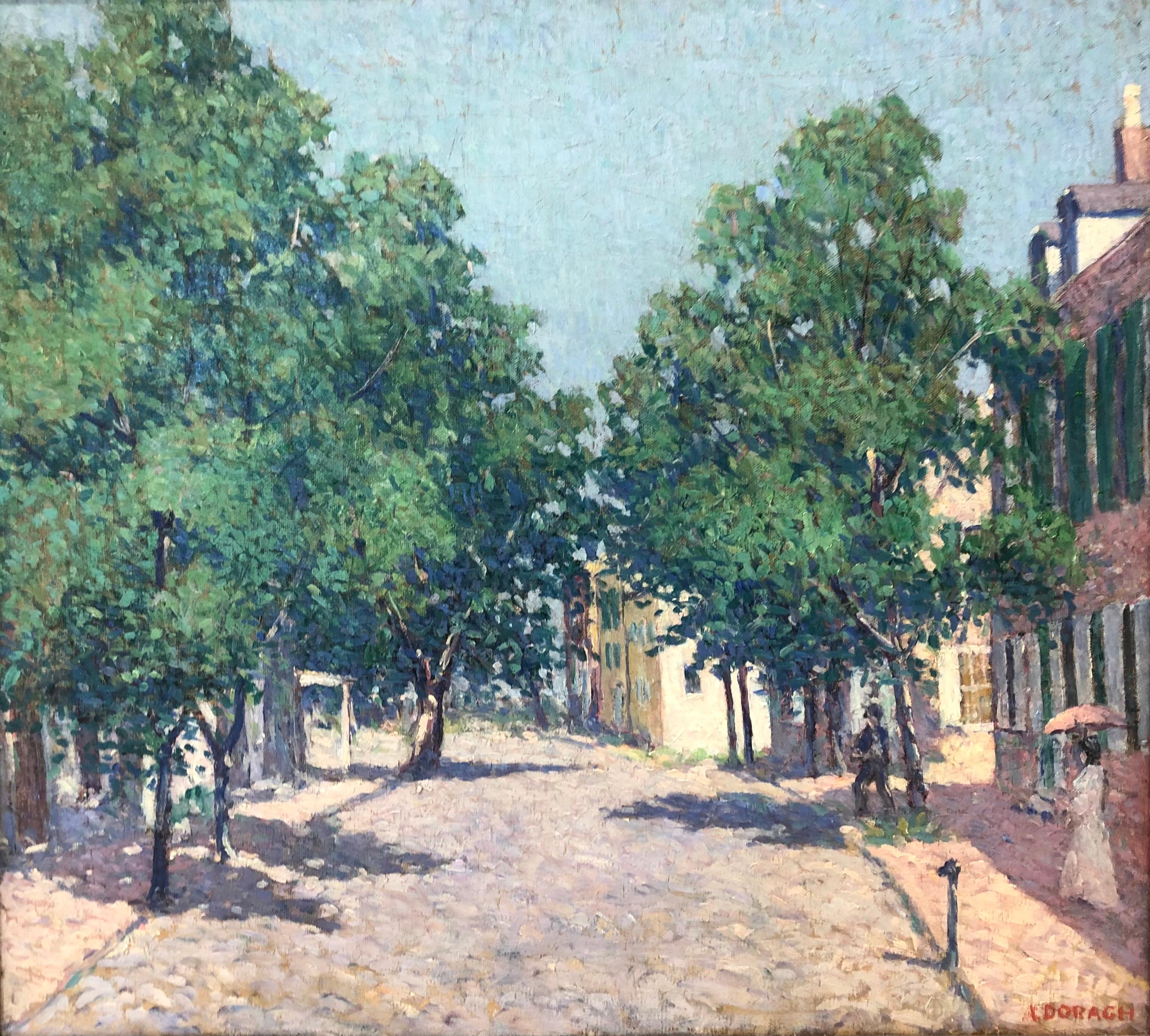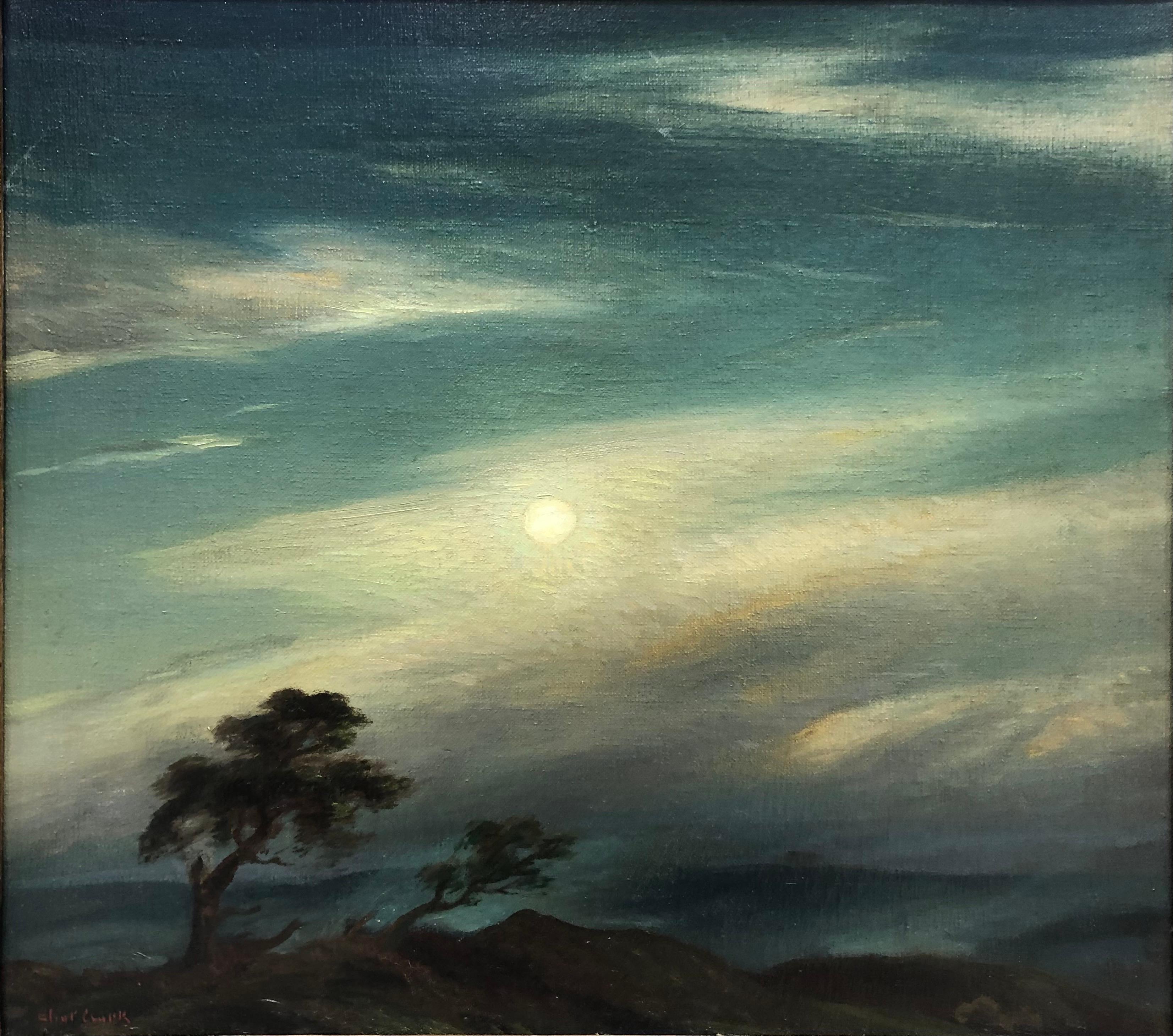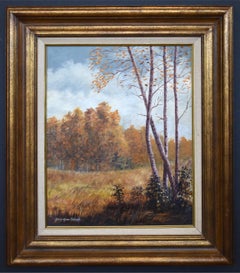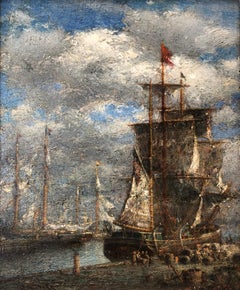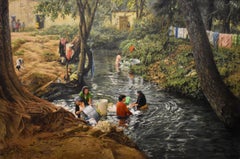
"HOT SPRINGS" WASH DAY CENTRAL MEXICO CLARK HULINGS, SANTA FE ARTIST
View Similar Items
Want more images or videos?
Request additional images or videos from the seller
1 of 13
Clark Hulings"HOT SPRINGS" WASH DAY CENTRAL MEXICO CLARK HULINGS, SANTA FE ARTISTDated 1982
Dated 1982
$87,000List Price
About the Item
- Creator:Clark Hulings (1922, American)
- Creation Year:Dated 1982
- Dimensions:Height: 30 in (76.2 cm)Width: 42 in (106.68 cm)Depth: 3 in (7.62 cm)
- More Editions & Sizes:Image Size: 24 x 36Price: $87,000
- Medium:
- Movement & Style:
- Period:
- Framing:Frame IncludedFraming Options Available
- Condition:Please view my 1stdibs storefront for other Vintage, Mid Century, & Contemporary, Texas, Santa Fe, New Mexico and American Art, paintings, Sculpture, & more.
- Gallery Location:San Antonio, TX
- Reference Number:1stDibs: LU769312218012
About the Seller
5.0
Vetted Professional Seller
Every seller passes strict standards for authenticity and reliability
Established in 1974
1stDibs seller since 2017
97 sales on 1stDibs
Typical response time: 1 hour
Authenticity Guarantee
In the unlikely event there’s an issue with an item’s authenticity, contact us within 1 year for a full refund. DetailsMoney-Back Guarantee
If your item is not as described, is damaged in transit, or does not arrive, contact us within 7 days for a full refund. Details24-Hour Cancellation
You have a 24-hour grace period in which to reconsider your purchase, with no questions asked.Vetted Professional Sellers
Our world-class sellers must adhere to strict standards for service and quality, maintaining the integrity of our listings.Price-Match Guarantee
If you find that a seller listed the same item for a lower price elsewhere, we’ll match it.Trusted Global Delivery
Our best-in-class carrier network provides specialized shipping options worldwide, including custom delivery.More From This Seller
View All"FALL LANDSCAPE" HILL COUNTRY
By Gary Lynn Roberts
Located in San Antonio, TX
Gary Lynn Roberts
(Born 1953)
Texas Artist
Image Size: 20 x 16
Frame Size: 28.5 x 24.5
Medium: Oil
Dated 1973
"Fall Landscape"
Gary Lynn Roberts (Born 1953)
...
Category
1970s Impressionist Landscape Paintings
Materials
Oil
"Crashing Waves" Impasto Oil Painting GALVESTON TEXAS SEASCAPE OIL ON CANVAS
By Paul Schumann
Located in San Antonio, TX
Paul Schumann Has been professionally cleaned and framed.
1876-1946
Galveston Artist
Image Size: 9 x 12
Frame Size: 13.75 x 16.75
Medium: Oil
"Crashing Waves"
Paul Richard Schumann (December 13, 1876 – April 29, 1946) was a Texas...
Category
1930s Impressionist Landscape Paintings
Materials
Oil
"Watering Hole" CALIFORNIA LANDSCAPE
Located in San Antonio, TX
George Devoss
California Artist
Image Size: 24 x 36
Frame Size: 29.5 x 41.5
Medium: Oil
"Watering Hole"
Resident of Los Angeles in 1928-37.
Edan Hughe...
Category
Mid-20th Century Impressionist Landscape Paintings
Materials
Oil
"HILL COUNTRY RANCH ROAD" TEXAS HILL COUNTRY AUTUMN LARGE SIZE FRAMED 37 X 49
By Porfirio Salinas
Located in San Antonio, TX
Porfirio Salinas
(1910-1973)
San Antonio Artist
Image Size: 24 x 36
Frame Size: 37 x 49
Medium: Oil
Dated 1957
"Hill Country Ranch Road"
Porfirio Salinas was a self-taught artist who painted landscapes of Central Texas with an emphasis on the vast bluebonnet fields...
Category
1950s Impressionist Landscape Paintings
Materials
Oil
"Toluca, Mexico" by Robert Onderdonk (1852-1917)
By Robert Jenkins Onderdonk
Located in San Antonio, TX
Robert Jenkins Onderdonk (1852 - 1917) San Antonio Artist Toluca, Mexico painting. Mexican Street Scene
Image Size: 11 x 8 Frame Size: 15 x 12 Medium: Oil "Toluca, Mexico" Circa 1912
This piece was painted in 1912 when Robert & his wife went to visit his son who was working in Mexico City at that time. Robert Onderdonk is considered the "Dean" of Texas Painters.
Robert Jenkins Onderdonk (1852 - 1917)
Robert Jenkins Onderdonk is noted for his landscape and portrait paintings and also for his fine art teaching.
Onderdonk was born in Catonsville, Maryland in 1852. He was the father of Robert Julian Onderdonk and Eleanor Rogers Onderdonk, also distinguished Texas artists. He received an academic education at the College of St. James, Catonsville, followed by studies at the National Academy of Design in 1872 under the instruction of Lemuel Everett Wilmarth. In 1875, Onderdonk attended Art Students League of New York and received instruction from Walter Shirlaw, James Carroll Beckwith and William Merritt Chase.
Onderdonk moved to San Antonio, Texas in 1878 where he made a living teaching and selling his paintings. In 1889 he moved to Dallas, where he painted several portraits for the Huburt Portrait Company, followed by employment with the Art Students League of Dallas. In 1896, Onderdonk returned to San Antonio, Texas where he continued to paint until his death in 1917.
Onderdonk was a member of the Allied Artists of America; Salmagundi Club, New York, and the San Antonio Art League. Exhibitions included the Annual Exhibition of the State Fair of Texas, Dallas; Dallas Art Association; Louisiana Purchase Exposition, St. Louis; Annual Texas Artists Exhibition, Fort Worth; Annual Exhibition, National Academy of Design, New York, and the San Antonio Art League.
Source:
John and Deborah Powers, "Texas Painters, Sculptors, and Graphic Artists"
Robert Jenkins Onderdonk was born at St. Timothy's Hall, Catonsville Maryland, in 1852. He had a very thorough academic education and was always sketching family members, classmates and landscapes on the back of his school books. This sketching ethic was a process he subscribed to his entire life, always carrying a sketch book with him where ever he went, like a camera of today.
Deciding to make art his profession, Robert moved to New York. He was not only a part of the academic beginnings of American art while studying in New York at the renowned National Academy of Design in 1870, but also one of the first student members, under the instruction of Lemuel Everett Wilmarth, at the Arts Students League.
At the League, Robert also studied and honed his craft with other teachers including Walter Shirlaw, William Merritt Chase and James Carroll Beckwith. Some of his classmates included: George Inness, Jr., Frederick Stuart Church, John Henry Twachtman and a Texan from San Antonio named Edward Grenet. Robert was lured to Texas in 1879 by his childhood friend and rancher, William Negely and by stories he read in the tabloids of the day that touted Texas as the "Promised Land."
Robert found the light, people and atmosphere of San Antonio agreeable and quickly settled in. He soon met a fellow Texas artist, Emily Gould, whom he married in 1881. They lived with her parents in a house called "Bella Vista" throughout their lives. The house was two miles north of town, had a wonderful view of the city and still stands today. Here Robert lived and taught art classes, painted portrait commissions, landscapes, still lifes and supported his family. Some of his students, who later became well-known Texas artists, were Mary Bonner, Seymour Thomas, Edward D. Eisenlohr, and Rolla Taylor. Robert worked hard and encouraged his students to do their best.
Robert was part of and organized several of the first art clubs in Texas, further helping to develop an interest in Texas art in the State and nationwide, but also giving Texas and American artists places to display their works, win awards and achieve much needed recognition. He helped organize "The Brass Mug Club," a revered group of San Antonio artists that met on Sundays to enjoy friendship and go into the Texas Hill Country and paint. Members included Julian Onderdonk (Robert's son), José Arpa, Leo Cotton, Rolla Taylor, Tom Brown and Ernst Raba.
In 1912, Robert and Julian were involved in the organization of the San Antonio Art League, the first important art organization in Texas with the mission to establish a free public gallery in San Antonio with exhibitions, lectures and classes in art. Later, larger exhibitions that needed more room due to the extreme popularity of the League and its awards were held at the Witte Museum in San Antonio.
While living in Dallas from 1889 to 1895, and in order to obtain commissions, Robert organized the first Dallas art school, the Dallas Arts Students League, where he was president and instructor. In 1905, Robert was chosen to select artists from New York and Texas to be represented and judged at the Dallas Fair, which later became the State Fair of Texas.
In 1901, Robert was commissioned by well-known Texas historian and writer, James T. DeShields, to paint a large historic painting of the Alamo battle. He used his family, friends and fellow artists for this painting, including his son. Robert even put himself in the painting, as one of the Alamo Defenders, taking a mortal shot from the enemy and falling backwards. The painting took three years to complete. The Fall of The Alamo was first exhibited at the St. Louis Worlds Fair in 1904.
Among Robert's important commissions were the illustrations he provided for feared Texas gunfighter John Wesley Hardin's autobiography, The Life of John Wesley Hardin, published in 1896. This was a courageous task by Onderdonk considering that Hardin, who had killed over forty men, was the fastest gun in the West, East, North or South.
When Robert Jenkins Onderdonk died in 1917 at the age of sixty-five at his home in San Antonio, he was known as the dean of Texas artists. His contributions to Texas art and the early artists of Texas were well-known and well-respected.
Written by Peter C. Rainone, as published in American Art Review, June 2008
Robert Onderdonk was educated at the College of St. James in Maryland where his father was headmaster. At 20, he studied for two years at the National Academy of Design, under Wilmarth, then at the Art Students League under Shirlaw and Beckwith. He was the private pupil of A H Warren, a tonalist painter known as "the Corot of America." In 1878, he concluded his art studies with William Merritt Chase.
To earn funds for a European trip he never made, Onderdonk was persuaded to establish his studio in San Antonio in 1878. By 1881 he was married, living near Pedro Spring, and taking the mule car to his studio in the city. He always carried with him a wood panel such as the top of a cigar box so he could paint small scenes. For his studio classes he charged $3 per month. He moved to Dallas in 1889, when offered $100 a month to teach. After his father-in-law died in 1896, he returned to San Antonio where he remained except for a trip to St. Louis in 1899 to try commercial painting on tile. Not ambitious, not robust, not careful in signing his paintings, he received commissions for hundreds of portraits without being able to earn a suitable living. Even his epic "Davy...
Category
1910s Impressionist Landscape Paintings
Materials
Oil
"Our Real Work Is In The Valley" West Texas Cowboy scene
By Randall Friemel
Located in San Antonio, TX
Randall Friemel (1970 - present) Texas Artist Image Size: 24 x 36 Frame Size: 32 x 44 Medium: Oil "Our Real Work Is In The Valley".
Biography
Randall Friemel (1970 - present)
Randall is a Ecclesial / Liturgical artist by trade. He began drawing many years ago. After using colored pencils for several years, he began experimenting with oil and found painting would not be much different. He has painted "Stations Of The Cross" for many churches throughout Texas. Randall has studied under Jack...
Category
2010s Impressionist Landscape Paintings
Materials
Oil
You May Also Like
Venice Landscape Italian Oil on Canvas Painting in Gilt Wood Frame, Belle Epoque
Located in Firenze, IT
This delightful turn of the century (early 20th century) oil on canvas painting represents an Italian landscape with one of the most famous squares in the world: Piazza San Marco in ...
Category
Early 20th Century Impressionist Landscape Paintings
Materials
Canvas, Oil
Italian Impressionist Oil on Board Marine Landscape Painting Naples Bay View
By Francesco Coppola Castaldo
Located in Firenze, IT
Everyday fishermen life is captured in this wonderful Italian impressionist late 19th century oil painting on thin board titled fishermen ashore. We love the neutral and natural colo...
Category
Late 19th Century Impressionist Landscape Paintings
Materials
Oil, Board
19th Century Italian Landscape Oil Painting - Via Flaminia on a Sunday morning
By Pio Joris
Located in Rome, IT
Pio Joris (Rome, 1843-1922).
The Via Flaminia, a Sunday morning," 1869,
with frame 160 x 83 cm. Signed P. Joris,
Pio Joris attended the Istituto di Belle Arti in Rome and in 1861 he enrolled at the Accademia di San Luca, where he remained for just a year. On a visit to the 1st Esposizione Nazionale di Belle Arti of Florence in 1861 he was attracted by the naturalistic works from the Naples school. He came into contact with Domenico Morelli and Filippo Palizzi during a trip to Capri, Sorrento and Naples in 1866. In Rome, he kept company with Mariano Fortuny, whose painting, with its pleasant, captivating luministic effects, made a very strong impression on Joris. That was how he developed his own very personal artistic language, which went on to bring him remarkable commercial success on an international scale, helped by his collaboration with Paris art dealer...
Category
Mid-19th Century Impressionist Landscape Paintings
Materials
Oil
Home Safe
By James Gale Tyler
Located in Greenville, DE
Very well executed seascape. Alternate title "In Point" inscribed on the rear. 17 x 15in in frame, including linen liner. ...
Category
Late 19th Century Impressionist Landscape Paintings
Materials
Oil, Board
Yellow House #18
By Edward L. Loper Sr
Located in Greenville, DE
Cityscape, typical of Loper's early work
Category
1950s Impressionist Landscape Paintings
Materials
Canvas, Oil
Summer ST Simeon
By Bruno Côté
Located in Greenville, DE
Beautiful example of Cote's later work. Executed with heavy impasto. 28.5" X 32.5" framed.
Category
21st Century and Contemporary Impressionist Landscape Paintings
Materials
Oil, Panel

